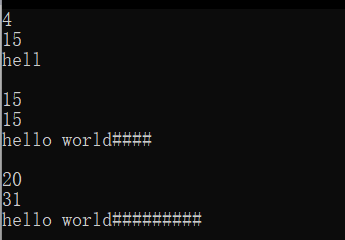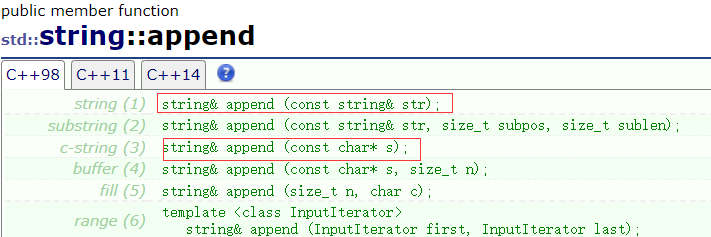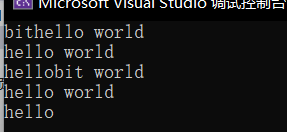举例说明:
void test6() { //当n<size,不会缩容(删数据) string s1("hello world"); s1.resize(4); cout << s1.size() << endl; cout << s1.capacity() << endl; cout << s1 << endl << endl; //当size<n<=capacity (插入数据) string s2("hello world"); s2.resize(15, '#'); cout << s2.size() << endl; cout << s2.capacity() << endl; cout << s2 << endl << endl; //当n>capacity, (扩容+插入数据) string s3("hello world"); s3.resize(20, '#'); cout << s3.size() << endl; cout << s3.capacity() << endl; cout << s3 << endl << endl; }

所以resize功能还是比较完善健全的。



他们是一样的,都是读写到string中的某个值,进行操作。
但是区别在于:当发生越界时,operator[]会直接assert()报警告;而at则会抛异常(后面我们会详细了解)
1.push_back, append, operator+=
插入:

push_back :尾插


下面通过举例来观察:
void test7() { //push_back string s1("hello world"); s1.push_back('x'); s1.push_back('y'); cout << s1 << endl; //append string s2("1111111111"); s2.append(s1); cout << s2 << endl; //operator+= string s3("666"); s3 += ' '; s3 += "hello world"; s3 += s2; cout << s3 << endl; }

2.insert,erase
适用于头插,头删,中间插入和删除
但这两种函数我们都不建议经常使用,因为它的效率很低,在删除或者插入时,就会有数据挪动,效率很低。


void test8() { string s("hello world"); s.insert(0, "bit"); cout << s << endl; s.erase(0, 3); cout << s << endl; s.insert(5, "bit"); cout << s << endl; s.erase(5,3); cout << s << endl; s.erase(5); //第二个参数不提供,默认是npos,直接从pos删到最后一个。 cout << s << endl; }

3.assign,replace(不重要)
assign(功能):先clear,再赋值
replace:替换内容
void test9() { string s("3456789"); s.assign("1234"); cout << s << endl; string s1("hello world"); s1.replace(6, 10, "666"); cout << s1; }

4.find,c_str,substr


find:也有缺省值,默认不提供,直接找到最后一个
c_str:取出C形式字符串(底层指针)

substr:取出str的一部分,再将其构建成新对象返回
getline:输入可以中间带空格的字符串
这就是我们经常要用到的函数接口,更底层的内容,需要我们在模拟实现的时候,去好好感悟,下期再见!
Copyright © 2023 leiyu.cn. All Rights Reserved. 磊宇云计算 版权所有 许可证编号:B1-20233142/B2-20230630 山东磊宇云计算有限公司 鲁ICP备2020045424号
磊宇云计算致力于以最 “绿色节能” 的方式,让每一位上云的客户成为全球绿色节能和降低碳排放的贡献者